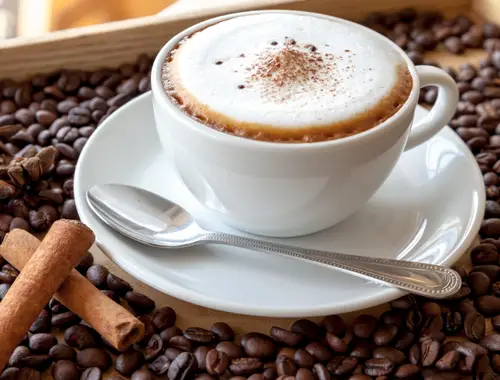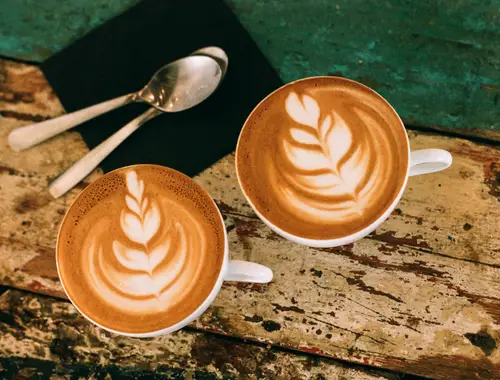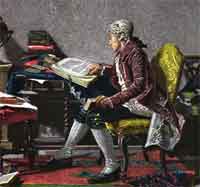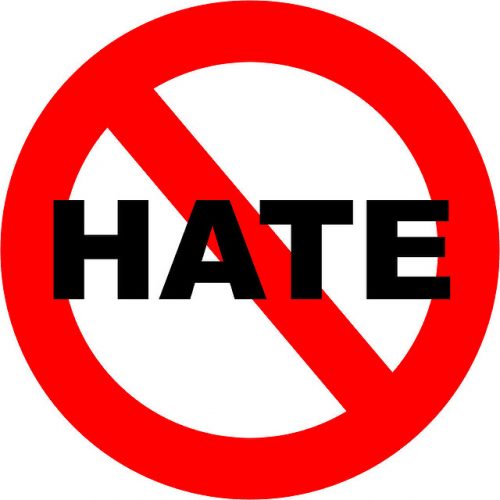Italy’s two most well-known coffee beverages are cappuccino and latte, both made with steamed milk. In William Dean Howell’s essay “Italian Journeys,” which was published in 1867, the terms “caffè” and “latte” were first used in 1847. The caffè variant of this drink was created in America, whereas the word “latte” originally meant milk in Italian.
The first time a caffe latte was made in its current form was by Lino Meiorin at Caffè Mediterraneum in Berkeley, California. He made a stronger cappuccino by adding more milk and calling the new concoction “caffè latte.”
When Milanese businessman Luigi Bezzera launched innovative espresso machines in 1901, cappuccino was born in its current commercial form. By the 1950s, the cappuccino had become highly well-liked in cafes and restaurants thanks to this equipment. However, making lattes and cappuccinos at home has been easier recently, thanks to the introduction of single-serve coffeemakers like Nespresso and Tassimo, which require less special consideration.
Other than a typical cup of brewed coffee or perhaps water, cappuccinos and lattes are among the most consumed drinks in the nation. Despite sharing many of the same components, these two espresso beverages are made differently, giving them different flavours, textures, and finishes. To learn more about your preferred beverage, keep reading.

How is Cappuccino Made?
A cappuccino begins with a bottom layer of single or double espresso shots, which was in demand during both World Wars (typically two in the US). Then, to give the beverage a rich, velvety texture, the second layer of steamed milk is placed on top, and then a thick, fluffy layer of foam is added on top of that.
A cappuccino has a much stronger espresso flavour than a latte since it has less milk and more foam.
The cappuccino chiaro, or white cappuccino, and the cappuccino scuro, or dry cappuccino, are two cappuccino variants that use more milk. The chilly variant of the coffee beverage, known as a cappuccino fresco, is typically topped with a tiny amount of chilled, frothed, and creamy milk.

How is Latte Made?
A single or double espresso shot serves as every latte’s foundation. A skilled specialist can create the perfect cappuccino for you. A correctly made cappuccino should have milk to foam ratio of 1:1, which experts may determine using the coffee’s weight.
The result is a luxurious, creamy beverage with a more subdued espresso flavour. The espresso is then mixed with several ounces of steamed and foamy milk. Espresso shot and steamed milk are then mixed in a ratio of one to two. After then, a layer of fluff is added to the latte.
Since lattes have become so increasingly popular in the last 20 years, there are numerous ways to create them. The latte is continually changed, and by including flavours like vanilla and hazelnut, it is frequently transformed into a sweet variation.
Nowadays, trendy latte arts are placed on top of the cups at restaurants and cafés, which is incredibly fascinating. Latte art describes the technique of adding steaming milk to espresso to produce a pattern or design on the surface of the resulting latte. Decorating the foam’s top layer will help you achieve this. The consistency of the craft depends on the barista’s skill and the calibre of the espresso machine. The challenge for the latte artist is how he pours the milk.
Similarities Between Cappuccino and Latte
Fundamental characteristics, including texture, foam, and the proportion of coffee to milk, distinguish lattes and cappuccinos. Lattes often contain less foam than cappuccinos. A cappuccino will include up to 50% more foam by volume. To further simplify, lattes are typically made with lightly heated milk and a small amount of foam on top. Typically, a latte has just enough foam for the first taste.
A gobbet of whipped cream or a sprinkling of cinnamon would be the ideal garnish for this foam. The smooth mixture of espresso, steamed milk, and any specified flavouring will then be served.
On the other hand, a cappuccino’s foamy top third is effective at keeping the heated milk and coffee underneath warm. The foam complements the taste and temperature of the other components simultaneously. Therefore, although cappuccinos contain coffee, milk, and foam, the foam is a more noticeable component and has a different function. And despite their differences, they also have some similarities, which are discussed below.
Both Drinks Contain Espresso Shots
The base for many coffee beverages, including cappuccinos, lattes, etc., is an espresso. Typically, this Italian beverage is served in smaller cups, much like a shot. This stronger beverage provides the caffeine boost your day needs. A tiny amount of hot water is pressed over ground coffee beans to create an espresso, which results in a thick coffee mixture. Contrary to popular misconception, an espresso shot does not have a higher caffeine content than a typical cup of coffee.
Same Amount of Caffeine
Each serving of the coffee drinks, cappuccino and latte, has the same amount of caffeine. For instance, since a shot of espresso is used to make both cappuccinos and lattes, they both have the same amount of caffeine.
When you think of coffee, the first thing that springs to mind is caffeine. However, coffee also includes antioxidants and other potent compounds that may lessen internal inflammation and offer disease protection.
The amount of caffeine in a medium 16-ounce (475 ml) cappuccino and medium 16-ounce (475 ml) latte is roughly 173 mg which is good for health.
Both Contain Protein, Fat, and Calories
Depending on the amount of milk and foam used, cappuccinos and lattes can have significantly different nutritional profiles but not too much. However, both drinks contain a good amount of fats, protein and calories required for daily tasks.
The amount of sugar or other sweeteners used and the type of milk used to affect the nutrition in such drinks.
What to Order: Cappuccino or Late?
Nowadays, regardless of whether a customer requests a cappuccino or a latte, many specialty coffee businesses instruct their baristas to add the same texture to steamed milk. In instances like this, lattes frequently come with flavouring added and are larger than cappuccinos. Additionally, cappuccinos frequently have an additional topping of foam added to them straight from the bottom of the pitcher of steaming milk.
Remembering this is made simple by converting the term “latte” from Italian to English. Latte means milk in English. You might only receive a glass of milk if you buy a latte in an upscale cafe in Italy. So make sure you ask for a cafe latte rather. Try ordering a “dry” cappuccino, which ought to be lighter and has more foam, if you like a cappuccino with more foam.
Final Thoughts
Whatever your preference for coffee, a perfect espresso is the foundation of a delicious cappuccino or latte. Because they are prepared differently, lattes and cappuccinos have distinct flavours and textures.
But which one do you believe is healthier? Depending on what is your definition of “healthy” is, Because a cappuccino contains less milk, it probably has fewer calories. For example, a 12-ounce latte has roughly 210 calories, compared to 130 calories in a 12-ounce whole milk cappuccino. These drinks are fantastic with non-fat milk or alternative almond, coconut, or oat milk. So, it all comes down to your taste and preference.
FAQs
What Is The Difference Between Cappuccino and Latte?
In contrast to caffe latte, cappuccino is made with less steamed or textured milk. In a cappuccino, the combined amount of espresso, milk, and foam is about 6 ounces in a 12-ounce beverage.
What Is Similar to Cappuccino?
The larger sibling of the cappuccino, also known as a caffè latte, is somewhat similar to the cappuccino. A latte centres on the smooth, silky foam. A single or double shot of espresso makes up about one-third of a typically steamed latte, with a thin layer of frothed milk around one centimetre thick.
What Is Similar to a Latte?
A latte and a cappuccino are extremely similar drinks, except the latter have less milk and more foam. Steamed milk covers the cup’s middle after the espresso shot, and thick layers of milk foam and perhaps a dash of cinnamon are added to finish it.
Is Cappuccino and Coffee Similar?
Milk is the primary distinction between a cappuccino and a coffee beverage. A cappuccino is often served in a cup and has more foam than coffee. While coffee is prepared with hot water, the milk in a cappuccino is frothed before it is added.
What Coffee is Similar to Latte?
Cappuccino, this espresso-based beverage, resembles a latte, except it has a thicker frothy top layer. Espresso, steamed milk, and foam are combined in equal parts according to the standard cappuccino ratio.
Which is Stronger, Cappuccino or Latte?
Because a cappuccino has more foam and less milk than a latte, it boasts a stronger espresso flavour than the latte.
Which is Better, Cappuccino or Latte?
Even though both beverages have more amount of milk than a typical cup of coffee, some believe that a cappuccino is better because it has less milk than a latte. However, the amount of basic espresso in a cappuccino and a latte is typically equal. So both beverages are healthy if caffeine is your health issue.











